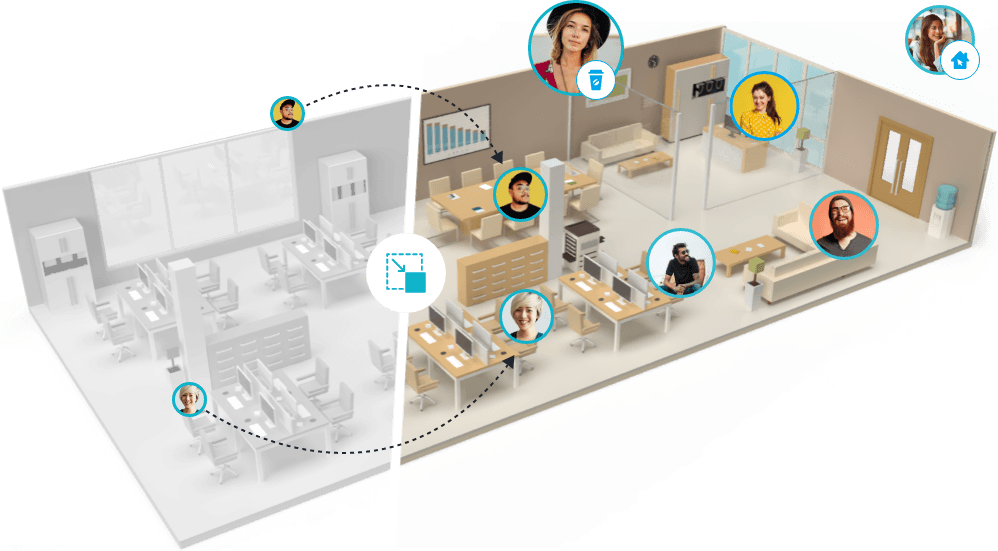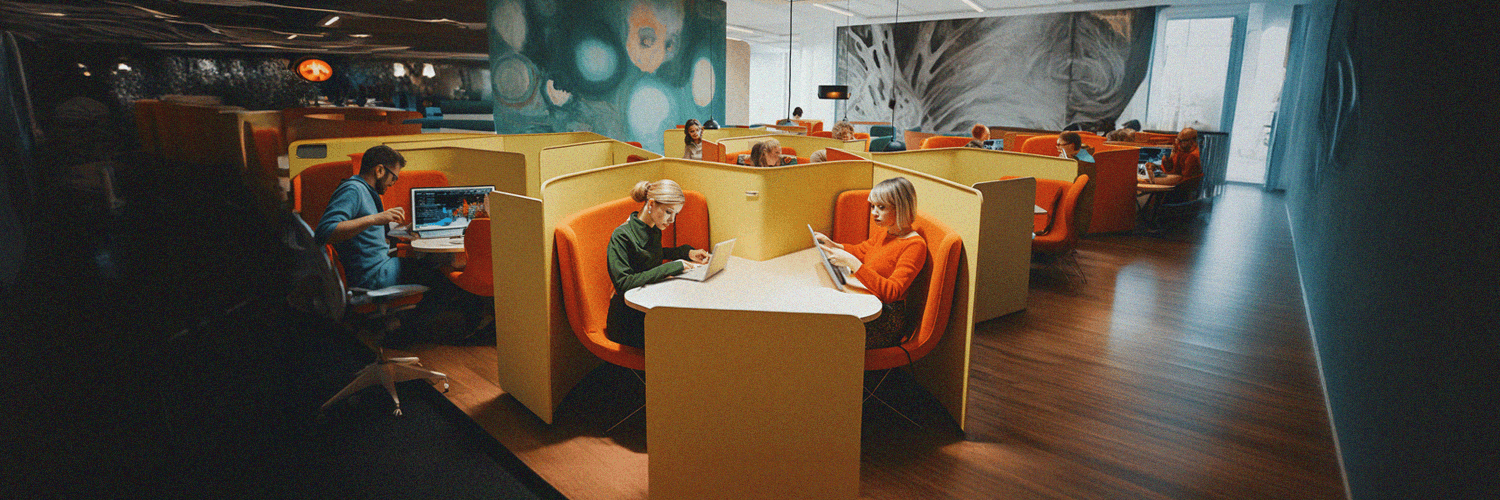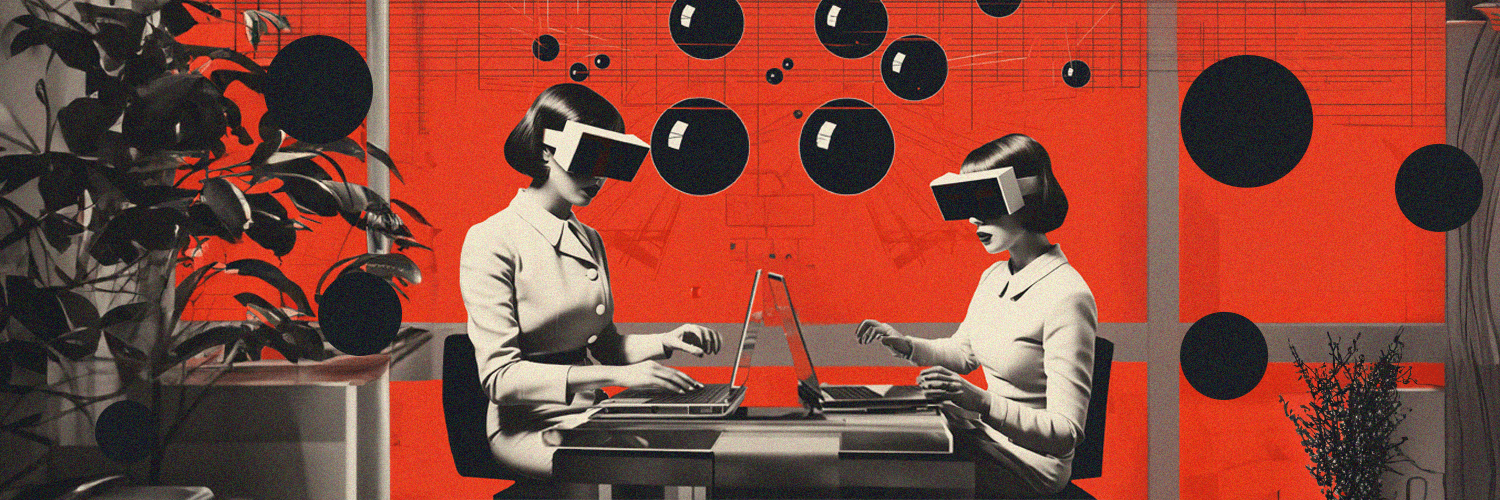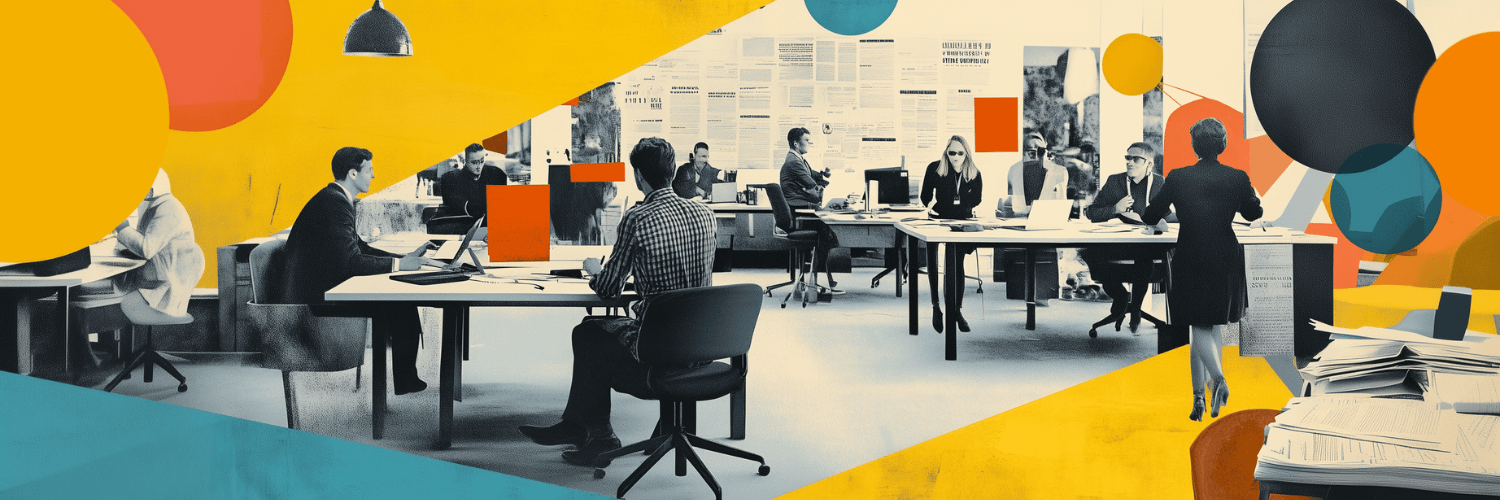9% companies surveyed by CBRE intend to significantly reduce their office footprint
while 72% are planning for modest office space reduction.
Reasons to consider downsizing office space
Gone are the days when growing your organization entailed expanding your office’s size. As the hybrid work model is overtaking the corporate world, the future of office spaces is all about flexibility, convenience, and optimization.
Not sure if you're ready to cut back on your office square footage? Here are some reasons why it’s a good idea both operationally and for your employees:
- Increasing commercial real estate prices.
- High office maintenance (supplies, utilities) costs.
- Poor office utilization - office space demand is often lower than available workspaces.
- 5/10 employees prefer hybrid work arrangements.
- Money saved on a smaller office space can be used for a higher-quality workspace, better office equipment, or employee development.

.png)
How hot desk booking software can help to downsize office space?
Hot desk booking software can help you transition to a small office space by reducing the number of fixed workstations.
Traditional offices usually have a 1:1 ratio of people to desks. However, a Knoll Workplace Research study shows that companies using flexible seating, like hot desking, have an average ratio of 2.3:1—more than twice the number of people per desk!
Over time, this ratio tends to increase as employees get used to hybrid work. This opens up significant opportunities to reduce office square footage and save costs. We've outlined the potential savings in the table on the left.
How hot desk booking software can help to downsize office space?
Hot desk booking software can help you transition to a small office space by reducing the number of fixed workstations.
Traditional offices usually have a 1:1 ratio of people to desks. However, a Knoll Workplace Research study shows that companies using flexible seating, like hot desking, have an average ratio of 2.3:1—more than twice the number of people per desk!
Over time, this ratio tends to increase as employees get used to hybrid work. This opens up significant opportunities to reduce office square footage and save costs. We've outlined the potential savings in the table on the left.

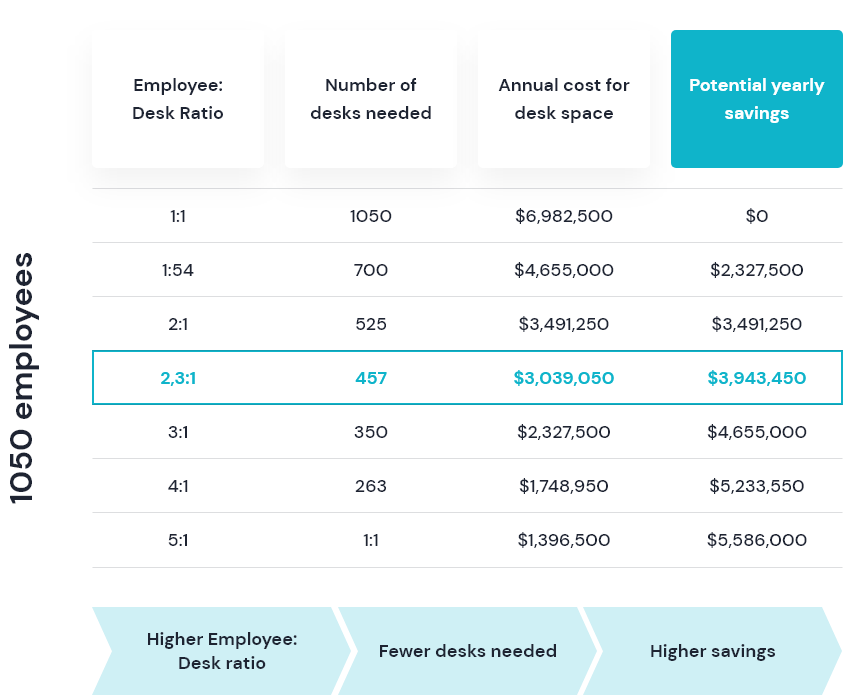
How room booking software can help you save real estate costs?
Room booking software can help to downsize and save real estate costs by optimizing your office space utilization.
Meeting and conference rooms take up a lot of space in traditional offices, but on a typical workday, only 40% are used. The takeaway? Many companies are paying for more office square footage than they need, leading to higher real estate costs.
While it’s unrealistic to expect meeting rooms to be fully booked all the time, aiming for around 75% usage (YAROOMS efficiency) is an excellent target to help reduce wasted space and costs.
How room booking software can help you save real estate costs?
Room booking software can help to downsize and save real estate costs by optimizing your office space utilization.
Meeting and conference rooms take up a lot of space in traditional offices, but on a typical workday, only 40% are used. The takeaway? Many companies are paying for more office square footage than they need, leading to higher real estate costs.
While it’s unrealistic to expect meeting rooms to be fully booked all the time, aiming for around 75% usage (YAROOMS efficiency) is an excellent target to help reduce wasted space and costs.

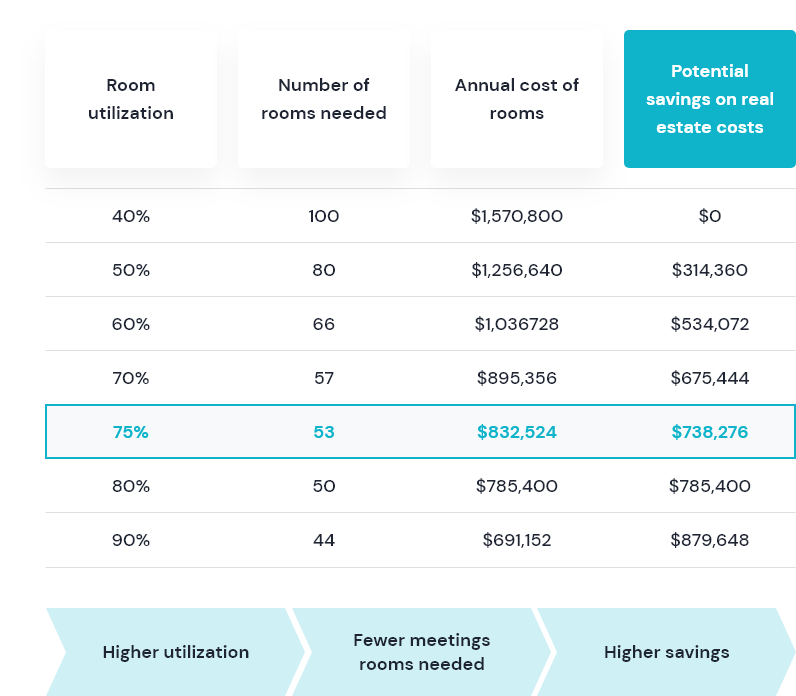
Case study: making a small office work for a large team
In 2021, Dedalus, Europe’s leading healthcare IT provider, moved its Vienna office to a new, smaller space. Before the office move, most employees had their own workstations or private offices. During this time, Dedalus was also hiring rapidly, and the team grew from 200 to 300 employees.
What do you do when there aren't enough desks for everyone?
Dedalus introduced a hot desking policy, asking employees to share workstations with others instead of having assigned desks. They needed a reliable desk booking solution to succeed with flexible working in a downsized office. That’s where YAROOMS came in. Today, Dedalus operates in an office where the number of employees is two times higher than the number of available desks.
Case study: making a small office work for a large team
In 2021, Dedalus, Europe’s leading healthcare IT provider, moved its Vienna office to a new, smaller space. Before the office move, most employees had their own workstations or private offices. During this time, Dedalus was also hiring rapidly, and the team grew from 200 to 300 employees.
What do you do when there aren't enough desks for everyone?
Dedalus introduced a hot desking policy, asking employees to share workstations with others instead of having assigned desks. They needed a reliable desk booking solution to succeed with flexible working in a downsized office. That’s where YAROOMS came in. Today, Dedalus operates in an office where the number of employees is two times higher than the number of available desks.
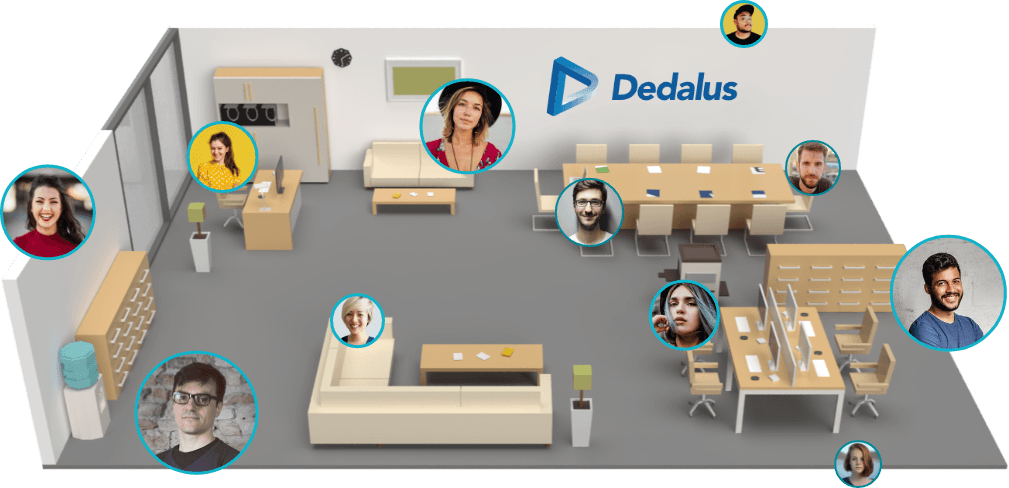

Insights to get you started
Making an office downsizing decision is no small feat.
To help you assess your needs and explore your options,
we've gathered a few valuable resources. Continue your research:
Ready to see the big picture?
Learn how thousands of forward-thinking organizations use YAROOMS to manage
their workplaces. Join us for a Live Demo or watch the On-demand Platform Tour.
their workplaces. Join us for a Live Demo or watch the On-demand Platform Tour.
Downsizing office space: FAQ
Do we need physical offices?
As businesses navigate the changing work landscape, the need for physical office space is changing but not disappearing. Downsizing office footprints has become common as more employees embrace hybrid models, splitting their time between working from home and returning to offices. This shift has prompted a focus on flexible work arrangements and the rise of shared workspaces, such as coworking environments, where employees can collaborate without needing a permanent desk.
Office design is also changing, focusing on adaptable furniture and spaces that foster productivity in a hybrid workplace. While some offices may remain empty, businesses are rethinking how to use physical spaces best to maintain workplace culture, collaboration, and connection. In this context, physical offices are still essential for fostering community, creativity, and teamwork, but their form and function are becoming more flexible and dynamic.
How to downsize office space?
To successfully downsize office space, companies need to adopt a smart, flexible approach. A critical step is implementing a robust hot desk and meeting room booking system to ensure workers can easily find and reserve workspaces when returning to the office. This helps maximize available space while minimizing empty offices. A hybrid work scheduling calendar is also crucial, allowing employees to coordinate their time in the office and reduce overcrowding. Office design should focus on adaptable furniture supporting shared workspaces and various working styles, such as collaborative areas and quiet zones, to minimize distractions.
Downsizing can also involve rearranging the office layout to decrease the overall floor space by using flexible furniture and creating multipurpose meeting rooms. This approach balances work flexibility with space efficiency, helping businesses reduce costs while maintaining a productive and comfortable workplace.
What is the future of physical offices?
Despite the shift towards hybrid and remote workspaces, physical offices will remain essential to the workplace, but their future will look different. Downsizing is becoming common, with companies opting for smaller offices as fewer employees return to the office full-time. These offices will focus on flexible, employee-centric layouts, with adaptable furniture and activity-based work zones designed to foster collaboration and productivity.
Hot desks, where employees don't have assigned seating, will become more popular, allowing for a dynamic office layout that maximizes space. Meeting rooms and shared workspaces will take center stage, promoting communication and teamwork while addressing the need for social interaction in the workplace. Office design will prioritize multifunctional spaces that can be quickly reconfigured for different tasks.
Empty offices may be repurposed or relocated, with office moves becoming strategic decisions that align with new business needs. As coworking spaces rise in popularity, companies may explore shared office models to reduce costs and provide flexible work environments. The future of physical offices lies in creating adaptable, engaging environments that balance in-person collaboration with the flexibility of hybrid work.
Why do companies downsize their offices?
Many companies downsize their office space as a cost-saving strategy, especially as flexible work and hybrid models become the norm. With fewer employees returning to the office full-time, the need for large office spaces decreases, allowing businesses to save money by reducing their square footage and renegotiating leases. Empty offices are often a sign that traditional office layouts no longer match the evolving needs of the modern workforce.
Companies are shifting towards flexible work arrangements, where employees split their time between the office and home, reducing the need for permanent desks. As a result, office layouts are being redesigned with adaptable office furniture, open floor plans, and collaborative areas that maximize space efficiency. By downsizing, businesses cut costs and create a more agile, employee-friendly work environment that reflects changing working styles and boosts productivity.


